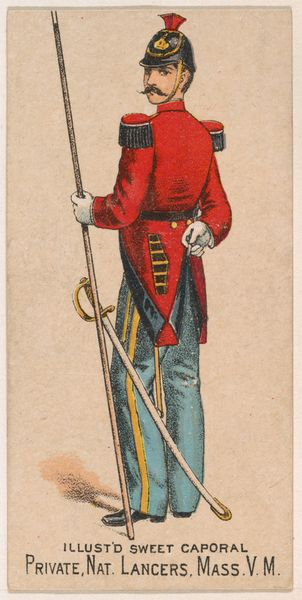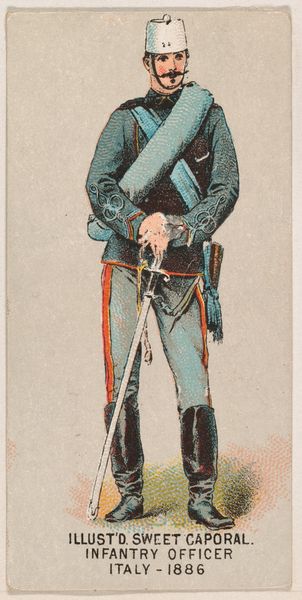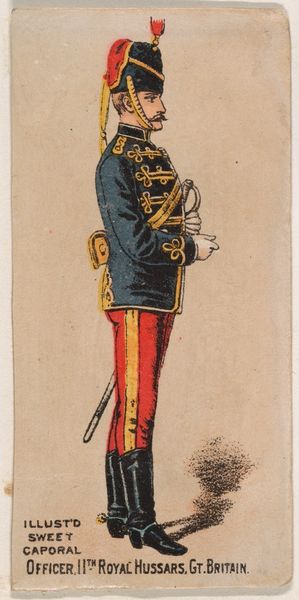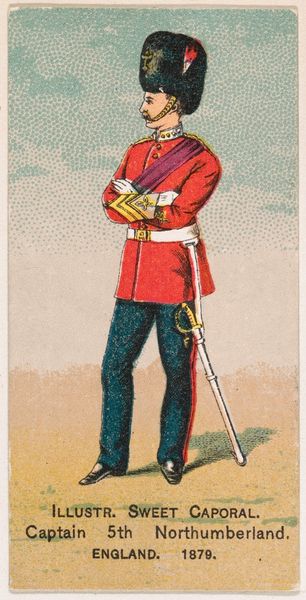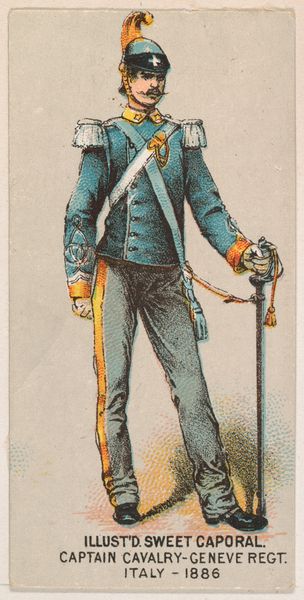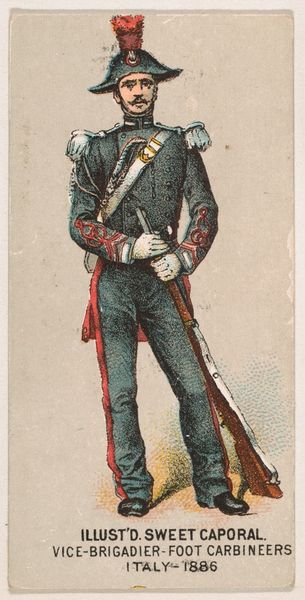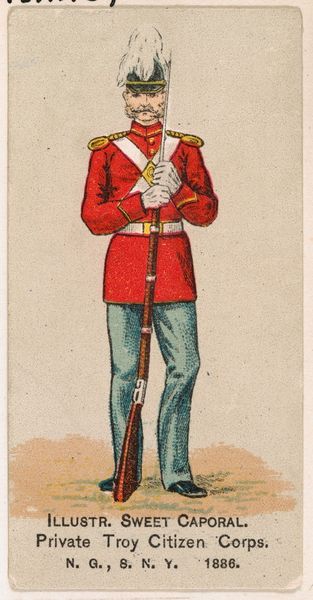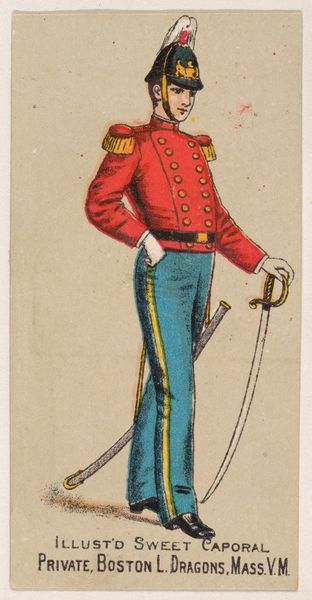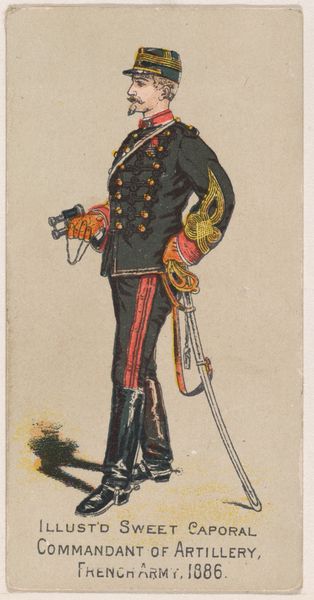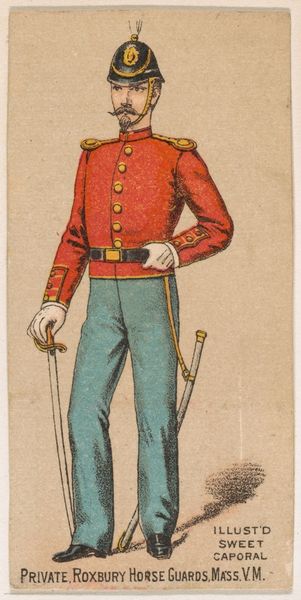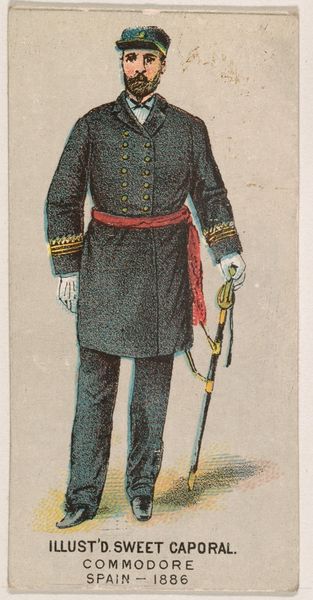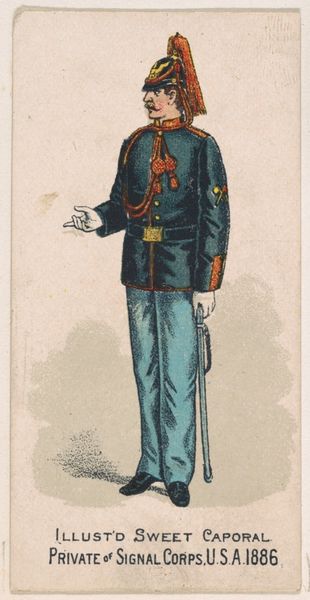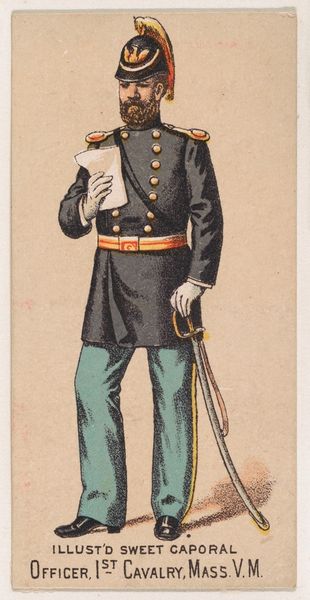
Officer, Ordinance, Spain, 1886, from the Military Series (N224) issued by Kinney Tobacco Company to promote Sweet Caporal Cigarettes 1888
0:00
0:00
drawing, print
#
portrait
#
drawing
# print
#
caricature
#
caricature
#
men
#
genre-painting
#
history-painting
#
academic-art
Dimensions: Sheet: 2 3/4 × 1 1/2 in. (7 × 3.8 cm)
Copyright: Public Domain
Curator: Immediately, I sense a certain formality, an almost comical rigidity in the figure's stance. Editor: Let's consider "Officer, Ordinance, Spain, 1886" from the Military Series. It's a print dating to 1888, published by Kinney Tobacco Company as a promotional item for their Sweet Caporal Cigarettes, now housed at the Metropolitan Museum of Art. Curator: Tobacco cards… such a mundane object elevated into the realm of historical portraiture! It's fascinating how something so commercial captures the zeitgeist of the late 19th century, and that idealized vision of military authority. Editor: Absolutely. The materials and context are essential. Consider the production process: mass-produced lithography designed for widespread consumption. It’s about generating demand, associating this officer’s image with aspirational ideals of status. The color palette of blues, reds, and yellows suggest cheap materials, accessible and consumable, very far away from the hand crafted luxury goods associated with aristocracy. Curator: Yet within that commercial intent, certain archetypes emerge. He's got that rigid posture, the somewhat theatrical uniform, but his gaze avoids direct connection. This type of costuming carries echoes of authority and tradition. Are we seeing, even in a small print like this, a comment on waning imperial power, maybe? A romantic longing? Editor: Perhaps. I think there is no romance here at all. The image, meant to appeal to smokers, reduces that power to a purchasable commodity, doesn't it? We buy into a certain history or identity along with our pack of cigarettes. It shifts the ground under our feet as far as the traditional patronage system is concerned, and this opens a pathway for commercial artmaking to appear. Curator: So, what begins as an everyday object embedded with cultural values becomes a record in its own right? Fascinating! Editor: Indeed! It encourages us to question the economic structures inherent in image production and distribution. The print lives somewhere between the space of labor, commerce and power, revealing tensions. Curator: Thank you for shifting my gaze; that adds interesting angles of the visual field. Editor: And thank you for bringing out some the intriguing narratives that run so deeply in this particular cultural moment, the age of industry!
Comments
No comments
Be the first to comment and join the conversation on the ultimate creative platform.
